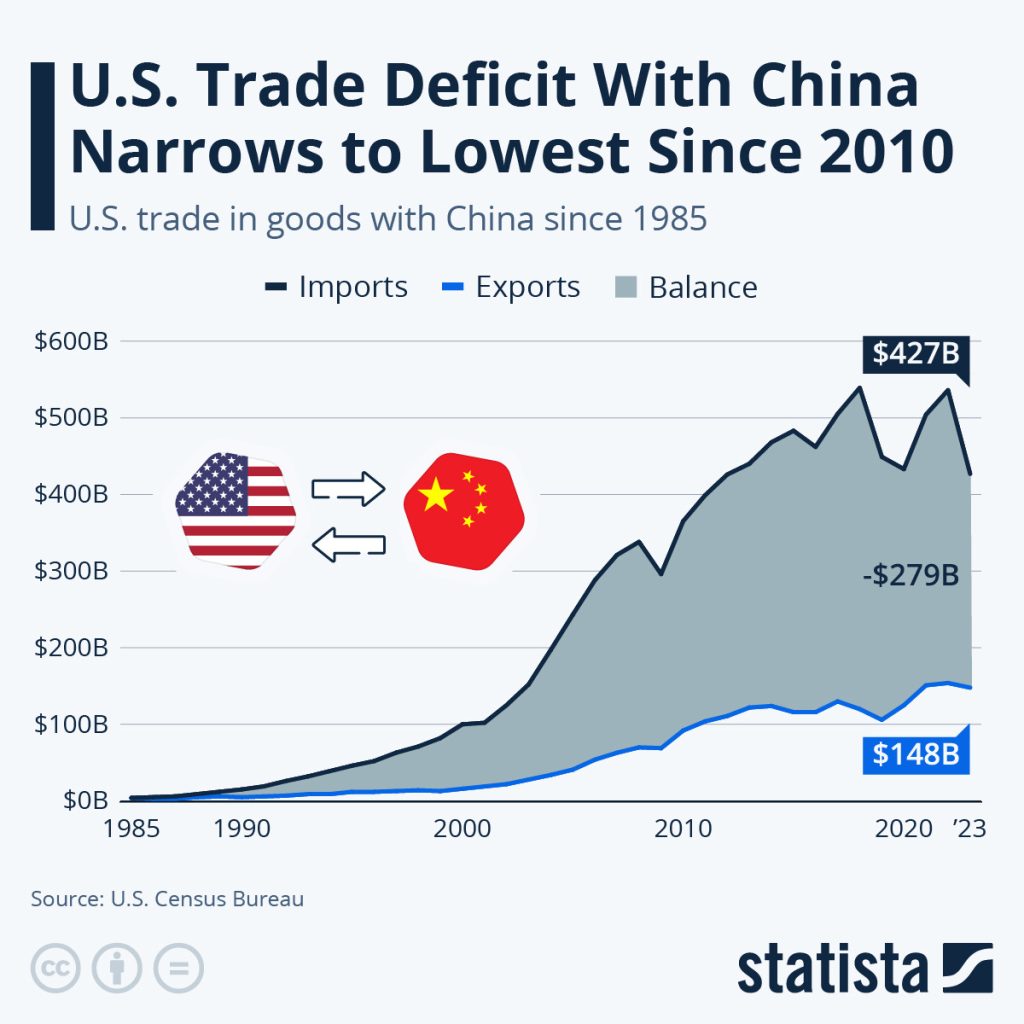U.S.-China Trade Talks: De-escalation Efforts This Week

Table of Contents
This article will analyze the de-escalation efforts expected this week during the U.S.-China trade talks and assess their potential outcomes. Key players involved include the U.S. Trade Representative and the Chinese Commerce Ministry, whose collaborative efforts (or lack thereof) will determine the direction of the bilateral trade relationship in the coming months.
Key Objectives of This Week's U.S.-China Trade Talks
This week's U.S.-China trade talks aim to achieve several critical objectives to ease trade tensions and foster a more stable economic environment. Success hinges on significant progress in several key areas:
- Reduction of existing tariffs: A primary goal is the reduction or removal of tariffs imposed during the trade war. Specific targets likely include tariffs on goods such as agricultural products (soybeans, for example), manufactured goods, and technology components. The extent of tariff reductions will be a major indicator of the talks' success.
- Increased market access for US companies in China: Expanding market access for American businesses in China is crucial. This involves addressing various trade barriers impacting sectors like agriculture and technology. Improved market access would stimulate bilateral trade and boost economic growth for both nations. Key concerns include reduced non-tariff barriers and fairer competition for US companies in the Chinese market.
- Enforcement mechanisms for agreed-upon trade deals: Any agreement reached requires robust enforcement mechanisms. This includes verifiable commitments from both sides and effective dispute resolution processes to ensure compliance and prevent future disagreements. Without reliable enforcement, any concessions made could be easily undermined.
Potential Roadblocks to De-escalation
Despite the stated objectives, several significant roadblocks could hinder de-escalation efforts. Intellectual property rights (IPR) protection remains a major sticking point, with the US expressing concerns about forced technology transfer and counterfeiting. Differences in regulatory approaches and differing views on fair competition could also prove challenging to resolve.
The Current State of the US-China Trade Relationship
Understanding the current state of the US-China trade relationship is crucial for evaluating the potential outcomes of this week's talks.
- Brief history of recent trade disputes: The trade conflict escalated significantly under the Trump administration, with both sides imposing tariffs on billions of dollars worth of goods. These actions disrupted global supply chains and led to increased uncertainty in the international trade landscape.
- Economic impact of the trade war on both countries: The trade war has inflicted significant economic damage on both the US and China. Statistics show reduced GDP growth, job losses in specific sectors, and increased consumer prices in both countries. The trade deficit between the two nations has also been a major point of contention.
- Global implications of the US-China trade relationship: The US-China trade relationship has profound global implications. The trade war disrupted global supply chains, impacting businesses worldwide and contributing to increased uncertainty in the international markets. Other countries have been forced to navigate a complex geopolitical landscape, with many seeking to diversify their trade relationships to mitigate risks.
Analysis of Recent Statements from Both Sides
Recent public statements from both sides offer mixed signals. While some comments suggest a willingness to negotiate, others reveal lingering disagreements and distrust. A careful analysis of these statements is essential to gauge the current atmosphere and the likelihood of a successful outcome.
Predictions and Potential Outcomes of the U.S.-China Trade Talks
Predicting the precise outcome of the U.S.-China trade talks is difficult, but several scenarios are possible:
- Optimistic scenarios: A successful negotiation could result in a partial or even a comprehensive trade deal, reducing tariffs and improving market access. This would positively impact global economic stability.
- Pessimistic scenarios: The talks could fail to produce any significant breakthroughs, leading to further escalation of the trade war and increased economic uncertainty. This outcome would have severe consequences for the global economy.
- Neutral outlook: A more likely scenario is a compromise that achieves some progress but leaves certain issues unresolved. This could result in a temporary truce, postponing further escalation but leaving the underlying tensions unresolved. This outcome would provide only temporary relief for the global trade landscape.
Conclusion: Assessing the Outcomes of U.S.-China Trade Talks
This week's U.S.-China trade talks are critical. The key objectives – tariff reductions, increased market access, and effective enforcement mechanisms – face significant challenges, including disagreements on IPR and technology transfer. Potential outcomes range from a comprehensive trade deal to further escalation or a temporary truce. The impact on global trade and the world economy is undeniable.
Key Takeaways: The success of these U.S.-China trade talks hinges on addressing long-standing trade imbalances, strengthening enforcement mechanisms, and fostering mutual trust. The outcome will significantly shape the future of bilateral trade relations and global economic stability.
Call to Action: Stay informed about the ongoing U.S.-China trade talks and their impact on the global economy. Follow reputable news sources and expert analysis to understand the evolving situation and its implications for businesses and consumers worldwide. Stay tuned for further updates on the crucial U.S.-China trade talks and their impact on U.S.-China trade relations and bilateral trade negotiations.

Featured Posts
-
 New Uk Visa Restrictions Target Nigeria And Pakistan
May 09, 2025
New Uk Visa Restrictions Target Nigeria And Pakistan
May 09, 2025 -
 How Harry Styles Reacted To A Hilarious And Bad Snl Impression
May 09, 2025
How Harry Styles Reacted To A Hilarious And Bad Snl Impression
May 09, 2025 -
 Mame Slovensku Dakotu Johnson Porovnanie Fotografii
May 09, 2025
Mame Slovensku Dakotu Johnson Porovnanie Fotografii
May 09, 2025 -
 Nyt Strands Puzzle Solutions Wednesday March 12 2024 374
May 09, 2025
Nyt Strands Puzzle Solutions Wednesday March 12 2024 374
May 09, 2025 -
 Williams Releases Franco Colapinto To Alpine The Full Explanation
May 09, 2025
Williams Releases Franco Colapinto To Alpine The Full Explanation
May 09, 2025
Latest Posts
-
 Hertls Injury Golden Knights Face Potential Absence Against Lightning
May 10, 2025
Hertls Injury Golden Knights Face Potential Absence Against Lightning
May 10, 2025 -
 Vegas Golden Nayts Vyigryvaet U Minnesoty V Overtayme Pley Off
May 10, 2025
Vegas Golden Nayts Vyigryvaet U Minnesoty V Overtayme Pley Off
May 10, 2025 -
 Nicolas Cage Lawsuit Dismissed Son Weston Still Facing Claims
May 10, 2025
Nicolas Cage Lawsuit Dismissed Son Weston Still Facing Claims
May 10, 2025 -
 Edmonton School Projects 14 Initiatives To Proceed Rapidly
May 10, 2025
Edmonton School Projects 14 Initiatives To Proceed Rapidly
May 10, 2025 -
 Understanding The Impact Of Federal Riding Changes In Greater Edmonton
May 10, 2025
Understanding The Impact Of Federal Riding Changes In Greater Edmonton
May 10, 2025
